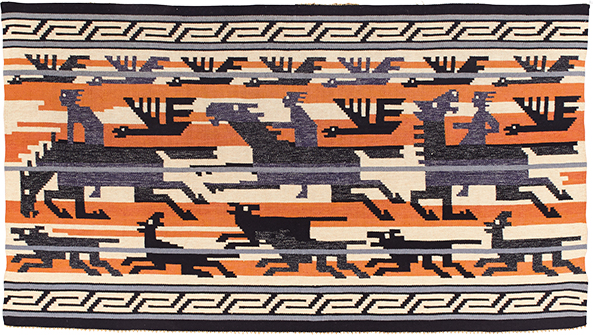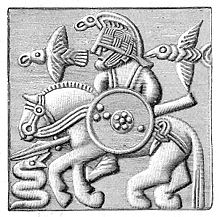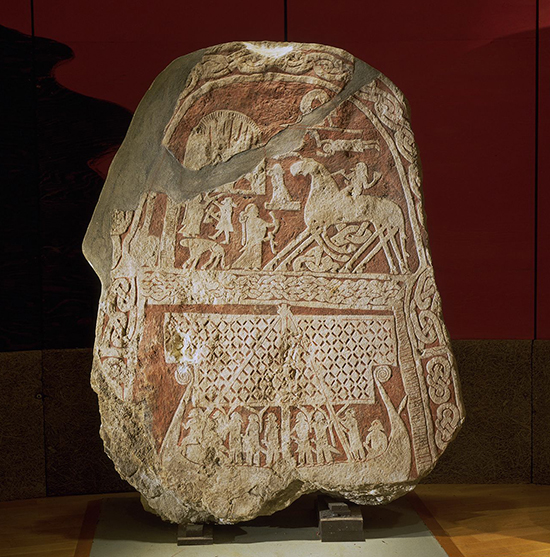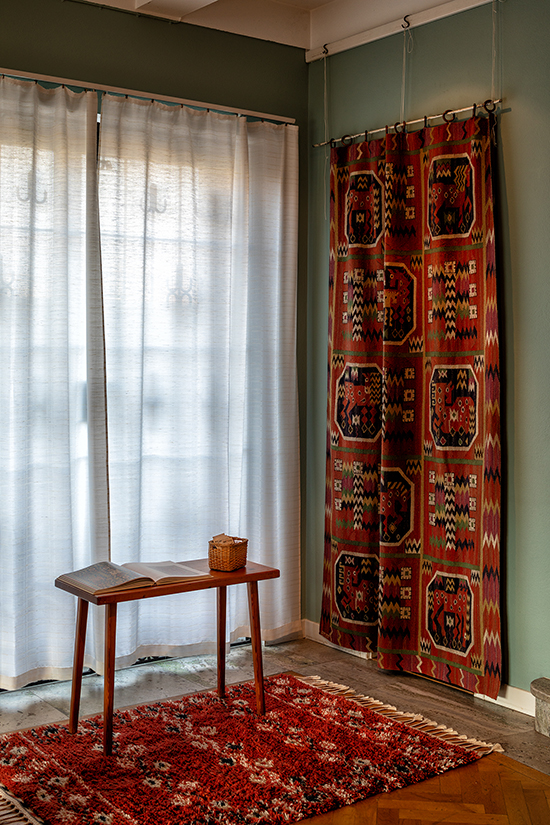November 06, 2019
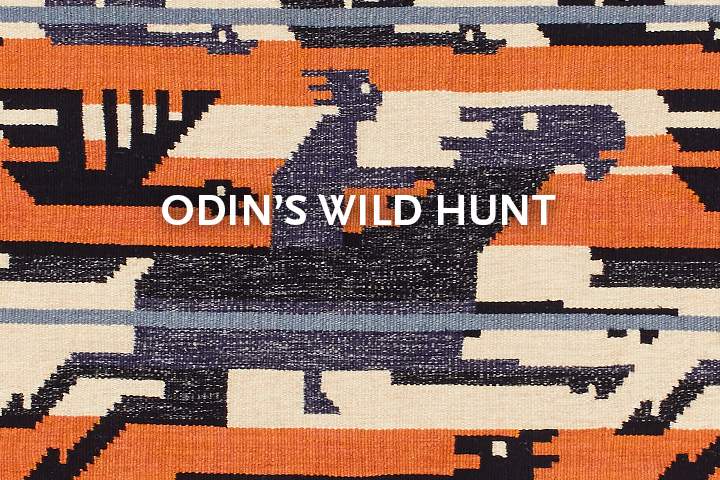
This extraordinary tapestry, new to the FJ Hakimian Collection, depicts the dramatic mythological scene of Odin’s Hunt. In this very early work of Märta Måås-Fjetterström, widely considered the greatest of all twentieth-century Swedish textile artists, we see her moving between established folk traditions, ancient sources, and modern visual idioms. The graphic and linear qualities of the drawing, quite radical in their austerity for 1903, give a new freshness to the ancient theme of Odin’s Hunt.
"Odins Hunting" Swedish Tapestry #22266. Sweden ca. 1903. 4'0" x 7'0" (122 x 213 cm)
According to legend, it is in the heart of winter, the time of year when it is best to stay inside by the fire, that Odin comes out to hunt. He makes himself known with violent changes in weather, when the cold North Wind comes rushing through the trees. The hunt of the god is invisible to the human eye but can be experienced in the sound and movement of the cold winter wind and frenzied winter weather atmospherics, so well-known to the people of northern climates.
Here Märta Måås-Fjetterström makes the movement of the Wild Hunt visually manifest. The one-eyed god on horseback is surrounded by his barking wolves and ravens sweeping down from Asgård. The frenzy and excitement of the subject are brilliantly rendered by the artist, depicting the sound of the sky and wind in the energy that runs through the design. Nature is dramatically evoked in the horizontal lines running through the composition and the slanting, windswept fret-pattern border. The bright colors also evoke the almost supernaturally intense sunsets that occur in Sweden.
She designed this work during a time of resurgent interest in Swedish mythological subjects, in part because of archeological finds from the Viking Age. A similar scene of Odin on horseback can be seen in a 1905 drawing that archeologist Oscar Montelius made from an Iron Age helmet; another appears on the famous image stone from Tjängvide.
Horses are a perennially popular motif in Swedish art, from the immediately recognizable Dala horse to the mythological bäckahäst, or brook horse, a theme that both Märta Måås-Fjetterström and her student and successor Barbaro Nilsson explored in their textile works. Nilsson’s extraordinary mid-twentieth century series of tapestries may have been inspired by this early work of Måås-Fjetterström—in both cases, artists brilliantly translated the powerful forces of nature into extraordinarily energetic woven designs.
Tjängvide image stone, 9th Century, depicting Odin on his horse, now in the Swedish National Museum of Antiquities in Stockholm.
A vintage Märta Måås-Fjetterström tapestry, titled Röda hästarna, or Red Horses, hangs in the hall of the firm’s studio. PHOTO: JAN SØNDERGAARD FOR WSJ. MAGAZINE

